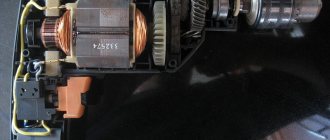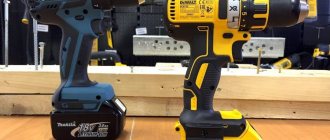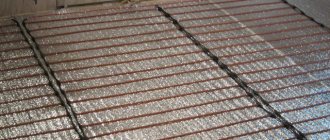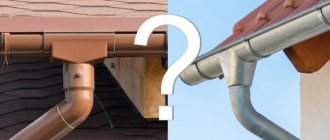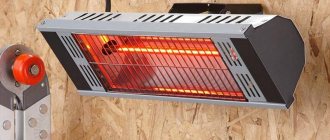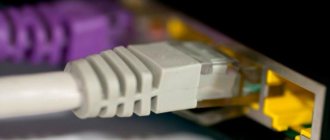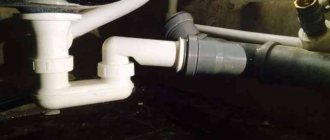When carrying out construction or repair work, it is almost always necessary to fasten together various building materials, panels or structures.
Very often this is done using screws, bolts or bolts. In this case, you cannot do without the appropriate tools - a screwdriver and a screwdriver. How do they differ from each other and what do they have in common?
Both of these tools are designed for screwing (or unscrewing) various fasteners and, in general, the principle of their operation is the same: the electric motor creates a rotational movement, and the planetary gearbox transmits energy from the motor to the spindle, on which the clamping chuck of the screwdriver or screwdriver is fixed. Both of these tools can be powered either by mains or battery.
The main difference between them is the adapter for attaching the attachments.
If the screwdriver has a quick-release chuck that allows you to fix both the cylindrical shank of the drill and the hexagon bits, then the screwdriver is designed for attaching bits only and is not capable of holding drills. We can say that a screwdriver is a more specialized tool. It copes more effectively with tightening thick and long screws.
Another difference may lie in the operating principle of the screwdriver. The tool uses the principle of tangential impact. While the screw easily enters the surface, the tool rotates it quickly, and when more or less serious force is required, it switches to frequent blows. Screwdrivers are often used when carrying out large volumes of stationary work, for example, in repair shops or service stations.
What is a screwdriver and what is it for?
The main function of a screwdriver is to screw in and remove screws, screws, self-tapping screws and other fasteners, connecting or disconnecting parts. The tool is driven by an electric motor, which is powered by a battery or electrical current through a power cable. The device operates using an angular impulse, screwing in the fasteners with a tangential blow.
High efficiency and speed of operation, as well as ease of use allow it to have a wide range of applications. This power tool is used both in everyday life and in professional activities - in auto repair shops, car service stations, in the construction industry, in the production of cars and appliances. For home or inactive use, they purchase mobile battery-powered models; in other cases, they prefer networked ones.
Advantages and disadvantages
To understand the difference between a screwdriver and a screwdriver, it is necessary to consider the advantages and disadvantages of the tool. Despite the similarity with the latter, it has specific distinctive features. This is a high-power device for specialized applications.
The advantages of the screwdriver include:
- copes well with fastening large lengths and diameters;
- works flawlessly with different types of fasteners (for example, if there is a square head or with 6 edges, external thread), providing high-quality screwing;
- saves time when working with wood - screws are screwed in at high speed;
- Uses electricity economically when powered from the mains.
Although the tool has several advantages, it also has disadvantages. When thinking about what is better to choose – a screwdriver or a screwdriver, you should pay attention to the disadvantages of the latter:
- noisy operation;
- inability to attach drills;
- The clamp is not adjustable;
- quite high cost.
Screwdriver or screwdriver
Main advantages of the screwdriver:
- Works more effectively with long and large screws or self-tapping screws.
- High speed for driving medium screws into wood.
- More economical in terms of power consumption for the network option.
- Versatility. Allows you to fix a drill with a cylindrical shank.
- Availability of several operating speeds.
- On average, lower cost.
The choice of these tools in retail chains is quite wide.
In general, it is quite difficult to give a definite answer to the question “which of these two tools to choose?” It all depends on the tasks that must be solved during the renovation or construction. For household purposes, a screwdriver is more suitable, and if you need to constantly carry out a large amount of work with fasteners, then it makes sense to opt for a screwdriver.
Source: housekvar.ru
What is a screwdriver: features of use
A screwdriver, like a screwdriver, is designed to work with fasteners, but it has its own differences. It is easy to operate and can change the rotation speed. The tool can be used for more than just screwing: it can also make holes and has a low impact force, like the Makita HP457DWE model. Often, a wrench is used to work with bolts and nuts, which many people confuse with a screwdriver. However, these are two different devices. The first one is highly specialized, usually professionals work with it. The second is universal, present in almost every home.
The main difference between a screwdriver and an impact wrench is its design, which allows you to change operating modes and perform a wide range of work without creating excessive noise. The power tool is equipped with a chuck that holds bits or drill bits, and in some cases can perform simple hammer or drill tasks.
Advantages and disadvantages
You can find out the difference between a screwdriver and a screwdriver by looking at the pros and cons of the units. Among the advantages of the first:
- multifunctional use;
- speed adjustment in different modes;
- affordable price;
- wide selection of models.
The disadvantages of such a device include:
- Low operating power;
- Inability to cope with specific tasks.
Pulse units like the Einhell TC-CD 12 Li, compared to classic ones, have higher power and operate with periodic jolts using torque.
Main differences
A screwdriver is a tool for installing a variety of fasteners. If you equip it with an adapter and a socket head, it can be used as a wrench. A screwdriver can only be used for small jobs. Impact wrenches are professional tools. The devices differ from each other as follows:
- Power. Screwdrivers are less powerful than impact wrenches. There are models of impact wrenches that are equipped with a gasoline engine and are used in the railway industry.
- Mass. Screwdrivers weigh less than screwdrivers. The weight of the “domestic” does not exceed a couple of kilograms. Pneumatic or hydraulic impact wrenches, common in industrial production, weigh many times more.
- Dimensions. Professional impact wrenches are up to 60 cm long, screwdrivers are about 20 cm long.
- Patron. Impact wrenches generally do not have them. The design does not provide for equipping with a cartridge. Instead, the tool is equipped with a rod that has a special mount for socket nut heads;
- Functionality. The screwdriver is designed for installing various types of fasteners: bits with straight and cross slots, disc shears, attachments for restoring chamfers of bolts, polishing, and cutting metal. It is used mainly in construction work - when screwing or drilling low-density materials. With an adapter it can be used for tightening nuts or as a regular drill. The impact wrench does not please with its multifunctionality. It is intended only for unscrewing and tightening nuts with rods of different diameters.
Adapters. The clamp at the top securely holds the heads under the nuts
- Impact mechanism. The impact wrench is not intended for drilling holes; its impact block serves to gradually loosen a stuck bolt and has a different operating principle than a screwdriver. The latter has a direct blow to the bit, while the impact wrench has an angular impulse.
- Resistant to loads. The impact wrench is wear-resistant because equipped with a more powerful motor. The competitor is not designed for heavy work.
- Nozzles A screwdriver works with bits and drills; only heads are suitable for a wrench.
Set of bits for a screwdriver
- Cost. The difference is not in favor of the impact wrenches.
Visually the tools are very similar
Main principle: tangential impact
Directed tangentially.
This is a special type of impact, not at all the one used by hammer drills or hammer drills.
To understand, imagine putting a wrench on a nut and hitting it with a hammer, tightening the fastener more and more. It’s the same in our case: at first the tool quickly rotates the screw or nut, and when more or less noticeable force is needed, it switches to frequent blows. How it works?
The blow is provided by the so-called “hammer”, which moves back and forth under the action of a spring. When moving forward, the “hammer” at some point engages with the “anvil” (it is part of the spindle) and thereby transmits an angular impulse.
Review of Metabo screwdrivers
Metabo screwdriver. is the golden mean when choosing a power tool, both for home use and for professional activities.
Metabo screwdrivers deserve this characteristic for their successful combination of functionality, properties and price.
The style of the famous German brand can be seen throughout the entire line of instruments.
Regardless of the battery. battery or network, the devices are ergonomic and light weight.
Professional and household screwdrivers from the oldest European manufacturer have earned popularity.
What are impact wrenches?
Pictured: Hilti cordless impact wrench SIW 22T-A.
Cordless impact wrench
- this is, by and large, the same screwdriver, only designed to work with nuts and bolts.
It has a slightly higher tightening torque, and instead of a chuck with a ¼" internal hexagon, there is a ½" square for socket heads. It is not surprising that today these two instruments are often supplied to the market as a pair, in the form of two compact models with minimal differences. Corded impact wrenches
are a completely different case.
They are heavy, bulky and do not have a twin screwdriver. A cordless angle wrench
is a machine with a long, narrow body that can tighten nuts in hard-to-reach places.
Review of Metabo screwdrivers
Metabo forms its assortment taking into account the scope of implementation.
The company creates screwdrivers with good parameters for each type of activity.
Systematically expands multifunctional abilities.
This significantly increases the sales market.
In the Russian Federation, models of German and Chinese assembly are offered.
Together with power tools, cordless models with battery power from 1.3 to 8.0 Ah are presented extensively.
The company is a leader in the development and implementation of innovative system solutions, and in turn introducing a range of stand-alone wireless technologies.
Regardless of power supply, screwdrivers under the Metabo brand support drilling functions.
For massive versions, a shock function is provided.
Safety, comfortable workflow. These are properties characteristic of the brand’s household and professional appliances.
It is striking that the warranty provided by the company is supported by service centers in the Russian Federation and is 3 years.
High torque
Pictured: AEG cordless screwdriver BSS 18C LI.
Not to be confused with torque.
In the technical data sheet of a screwdriver or impact wrench you will see incredible numbers: 100, 150, 180 N*m. And if this is a very powerful cordless impact wrench, then we are talking about hundreds of “newtons”. There are no errors here, you just need to know that the tightening torque of the fasteners is given, and not the torque that the gearbox develops. Those “unrealistically” high Newton meters are not the result of a gigantic effort applied, but only a consequence of a series of blows on the edges or slots.
What is the difference between a screwdriver and a drill?
Often people at the very beginning of their own construction activities wondered: what is the difference between a drill and a screwdriver? At first glance it may seem that there are significant differences, but this is an incorrect worldview. There are more than enough differences between these power tools and you will soon find out for yourself.
Screwdriver purpose
The very first and most significant difference between a screwdriver and a drill. this is his purpose. This power tool is used only for serial work, and its function is to tighten and unscrew self-tapping screws.
Naturally, there are such craftsmen who use screwdrivers as a drill, but for you it’s better not to repeat their exploits. Firstly, it is very difficult to find suitable drills, and secondly, the design of the screwdriver itself is not adapted for drilling. In most cases, a screwdriver does not have a keyless chuck like a drill. In its place is a hexagonal socket for a bat.
Screwdriver for home and work. My tips for choosing (voltage, power, etc.)
A screwdriver is a tool with which it is very convenient to twist self-tapping screws; its main purpose is precisely this. However, this is not the only limit to the functionality of this useful tool, you can also drill wood, metal and even brick (if the impact function is present).
Of course, it is not at all necessary to have a screwdriver in the house when you have a drill, however, if you often work with self-tapping screws, then a “shurik” is simply necessary.
Screwdrivers are divided into 2 main types - cordless and corded. (You can read about corded screwdrivers for the home here.) Of course, the vast majority buy cordless ones, since they can be used where there is no electricity. For example, at the dacha, when the wires have not yet been installed. So, whatever one may say, a cordless screwdriver is a necessary and very useful tool. So, how to choose this tool, what to look for, what features to look for and what brands to look for? The answers are in this article.
How many volts should I use?
If you went to tool stores, you saw that screwdrivers come in 9.6 volts, 12 volts, as well as 14.4, 18 and even 24 volts. What do all these numbers mean and how do they affect your work? The voltage supplied to the battery determines the power of the tool.
Simply put, the higher the voltage, the higher the power. In turn, the higher the power, the slower the battery discharges. Since we are choosing a tool for the home, we should not take the most powerful one, because it will be heavy. Why do we need a heavy tool if we plan to use it only when tightening screws?
For home use, 12 volts is quite enough, but I think 14.4 is the most optimal. The difference in price between the 12 and 14.4 volt Shurik is insignificant, so it’s better to overpay a little and buy a more powerful one. However, there is also no big difference in torque; 14.4 will be 20 percent more powerful. Therefore, first of all, figure out what kind of work you will be doing and, based on this, select a model of a certain voltage.
Tightening torque - how many newtons?
By and large, this is the most basic parameter of the “Shurik”. Measures the tightening torque in Nm (newton per meter). If you estimate this way, then most home models have a torque of no more than 18 Nm. How much force is needed to tighten screws? The question is certainly interesting.
Driving thick screws requires much more force than thin screws. Let's take, for example, a self-tapping screw with a thickness of 3.5 mm (standard for wood) and a roofing screw with a thickness of 6.3 mm. The difference in thickness is significant. We will also take into account the length of the screw; you must agree, it’s one thing to screw in 30 mm or 100 mm.
To tighten standard black wood screws, a small tightening torque is sufficient; as a rule, all household 12-volt screwdrivers have a torque of 10-15 Nm. This torque is enough to tighten a self-tapping screw on wood up to 150 mm long.
However, it is a completely different matter if you are going to cover the roof of your dacha using roofing screws. They are usually very thick (4.8 and 6.3 mm thick), so the tightening force must be much stronger.
As you already understand, 15 Nm is not enough here, so choose models with a more powerful tightening torque, usually from 20 Nm. And here when choosing, confusion begins, it seems that the screwdriver is powerful, 18 volts, but the torque is weak. Or vice versa, a 12 volt screwdriver has a torque of 28 Nm. How does this happen? Let's figure it out.
Although there is nothing to understand here, logically, the higher the voltage, the greater the torque. However, this is not the case with professional models; all 12-volt models have a solid torque of 24 Nm and above. For household ones, in order to achieve a tightening torque of at least 20 Nm, the screwdriver will have a higher power supply, most often from 18-24 volts.
How many batteries are included?
Also, various models have 1 or 2 batteries included. When purchasing a screwdriver, consider whether you will need a second battery. As a rule, it comes in handy when there is a lot of work to be done. While you are working with one, the second one is charging. If the first battery is discharged, you insert the second one and continue working without interruption, and immediately put the discharged one on charge.
And if you work for 20-30 minutes a day, then one battery will be enough and you won’t have to overpay.
A model with 2 batteries costs 20-30 percent more. It is worth saying that the most expensive thing in a tool is the battery; it takes up 80 percent of the cost of the entire tool. For example, a 14.4 volt battery for the Black and Dekker model costs about 1800 rubles, while the “Shurik” itself with 1 battery costs 2400.
Battery
Autonomous screwdrivers are equipped with 3 types of batteries:
Nickel-cadmium (Ni-Cd). work stably at low temperatures, hold a charge for a long time; Lithium-ion (Li-Ion). They are small in size, highly environmentally friendly, and charge quickly. Lihd. This is a new development from Metabo. The chemical cell with a capacity of 4.0 to 8.0 Ah is an innovative technology. The battery has a power range from 400 to 3200W.
The standard complex charges the screwdriver batteries.
Depending on the configuration, it is supplied as a set or sold separately.
Most models support charging power supplies of all types and operate on a mains voltage of 230-240 V.
The charger is universal and connects with batteries from other types of stand-alone Metabo tools.
The introduction of an adapter allows you to charge the elements of all old and new units.
Metabo uses its Ultra-M development, created for effective communication between necessary nodes.
The development keeps under control the balance of interaction between the battery, motor, gearbox and controls the charging / discharging process.
As a result. better energy consumption of battery packs, faster charging, highest power output and longer service life.
What it is?
This is a small device in shape and weight, which is similar in appearance to a traditional screwdriver.
The main difference is the presence of a pulse operating mode.
Due to this, the torsion of the fastener does not occur smoothly, but intermittently with characteristic measured jerks (tangential impacts).
This makes it easier to drill straight holes; the tool is suitable for working with rusted bolts, nuts and screws with a damaged slot. Advantages of an impact screwdriver:
- small dimensions, light weight;
- powerful torque;
- durability of the device;
- control of screw screw depth;
- possibility of use for complex fasteners;
- the drill does not get stuck during operation.
The pulse mode is more often found in professional models of screwdrivers, and is also almost always present in impact wrenches.
Pros and cons of Metabo screwdrivers
No matter how unique and useful technologies are, technology is characterized by shortcomings and advantages.
For an impartial assessment of screwdrivers from a German manufacturer, it is worth classifying the views of Metabo users.
So, among the advantages:
Measured work in professional mode during the service life. the instrument adequately withstands loads in accordance with its features. The handle has a comfortable shape and is placed close to the chuck, which, coupled with the engine, which is shifted towards the wrist area, determines impeccable ergonomics. Due to THESE reasons, the increased weight of cordless screwdrivers is leveled out. The placement of the reverse switch prevents accidental pressing. Compactness and low weight of massive corded screwdrivers. here's 1.1 to 1.2 kg. With the help of the Variospeed (V) system, speeds are switched quickly and safely, and the amount of torque is regulated. The high-strength housing and iron gearbox guarantee safety in adverse operating conditions. The bit can be changed simply and quickly thanks to the quick-release chuck. Massive Metabo engines determine the functionality within the framework of 1 tool and allow: drills, the use of pulse and impact functions. The latest series batteries charge within 30-40 minutes. Charge level indicator on the surface of the battery case.
READ What kind of oil to pour into the gearbox of a walk-behind tractor
Among the minuses it is worth highlighting:
In hot weather, problems with charging are likely. The problem is solved by moving the charger to a cold place. The free play of the keyless chuck tends to increase. Fragile plastic gear teeth. Weak battery. Short battery life. "die" within a year. Poor build quality in Chinese models.
Before purchasing a screwdriver, you need to keep in mind that household versions are NOT designed for intensive use.
Policy . For each task, equipment of appropriate power and functionality is designed.
How is it arranged?
The circuit of such a tool is similar to a standard electric drill. The basis of the device is an electric motor that transmits torque to a planetary gearbox. It transfers this value to the keyless or hex chuck. The device also contains all the elements traditional for drills and screwdrivers:
- speed controller;
- load limiting mechanism;
- system of gears, carrier and satellites.
A distinctive feature of an impact screwdriver is its brushless motor design. In it, the rotor and magnets, as well as the winding and starter, are swapped, which should be taken into account when repairing or servicing. This mechanism reduces wear of the main parts by up to 30%, and also allows you to significantly increase the load if necessary.
The power supply of the instrument depends on its configuration. Most often, an impact driver is equipped with a DC battery. For comfortable operation, it is advisable to buy a device with a lithium-ion battery with a voltage of 16-18 V.
Important! Despite the increased power of the tool, the fastener splines are not damaged during screwing. This allows you to remove and install large fasteners without deforming them.
How much does a screwdriver weigh?
The weight and size of the screwdriver will depend on the model as well as the type. Screwdrivers are usually compact and lightweight. Their length does not exceed twenty centimeters, and their weight is several hundred grams. As always, this will depend on the model you choose. Some models may weigh more, but this is not the practice.
There are unique sets of screwdrivers with a large number of attachments. They usually consist of several pieces (from six to eighteen). The screwdrivers in these sets have different tips and sizes. With these kits you can do all types of work. Some are sold in tool storage cases.
How to use the mode?
When the screwdriver is subject to an impulse load, uneven rotation of the spindle with characteristic jerks is observed. This allows you to significantly increase torque, as well as load power, without damaging the threads and fastener slots. Unlike an impact drill, it delivers a powerful and instant blow that propels the screw or nut forward.
If increased resistance occurs during operation (for example, if there is rust on the fasteners), the screwdriver automatically switches to pulse mode. The torque force increases by 3-4 times, the angular speed of rotation of the coupling decreases. Depending on the specific model, the enhanced speed may turn on automatically or start when resistance appears.
Working with the tool is no different from using a classic screwdriver - you should install the shank of the attachment in the chuck, then attach it to the fastener and start the device. Drilling or screwing occurs with jerks, so the handle of the device must be held very tightly; it is recommended to use gloves.
Is it possible to make a wrench yourself from a screwdriver?
Of course it is possible, with only one important caveat: it is unlikely that you will be able to obtain the same power as a tool manufactured in an industrial environment. But very often too much power is not required. For example, if you have to change tires on a car. Many people know how long the process of removing wheel nuts is. Of course, it is possible to turn to specialists, but this will cost money. If you have a screwdriver on hand, you can quickly convert it into a wrench: all you need is an adapter with a head of a certain size, which must completely match the dimensions of the wheelbrace. All that remains is to secure this adapter into the cartridge and install the head. The screw driver is completely ready.
Of course, this will not be a full-fledged tool, since you will still need to loosen the nuts manually, but the time spent on all wheels will be only one minute.
How to choose?
When choosing a screwdriver model, you should take into account the specifics and regularity of the work. If you plan to use the tool frequently and intensively, then preference should be given to brushless professional models with a battery. If you need the device for rare work around the house (screwing on a cornice, assembling furniture or hanging a shelf), then you can choose models with low power and powered from the network. What to pay attention to when purchasing:
- weight and compactness of the model;
- maximum torque;
- automatic or manual activation of pulse mode;
- ergonomic handle, rubberized elements on the contact parts of the body;
- ability to change speeds;
- type of battery, its power.
If you already have special devices for working with fasteners, for example, a regular screwdriver, impact drill and impact wrench, then models with a pulse mode are not a necessity. Most often they are used in construction and automobile workshops, where it is necessary to work with stuck and rusted fasteners.
Important! Batteries for a classic screwdriver are also standard for impulse models. If you already have such a tool, you can purchase a tool without a battery, saving your purchase budget.
Best screwdrivers 2021
A screwdriver is a tool that, despite its compactness, impresses with its productivity and speed of operation. A screwdriver is useful where there is a need to firmly tighten self-tapping screws and screw caps of large diameter.
The principle of operation of a screwdriver is a tangential impact, which helps the tool screw a screw into a surface, or firmly connect two surfaces to each other. Thus, a screwdriver differs from an impact drill (or hammer drill) in the angular impulse. To create such an impulse, a motor powered by mains power or battery power can be used. The screwdriver is applicable in construction, mechanical engineering, and instrument making. A compact and maneuverable cordless screwdriver is useful in everyday life, since large amounts of work in the house are not required. Below we take a look at this special tool and the 5 best screwdriver models. As an addition, tips for choosing a screwdriver.
Top 3 best models
The construction tools market offers a wide range of similar products. We have selected the 3 most successful models:
- Metabo BS 18 LTX. Screwdriver made in Germany. It has a quick-release chuck, powered by an 18 V battery. The maximum torque is 110 Nm, suitable for working with wood and metal. Additional options include spindle lock, built-in overload protection and speed adjustment. There is a hook for wearing on a belt. Sold in a case without battery and charger;
- DeWALT DCF887N-XJ. Compact brushless screwdriver from a famous American brand. It is painted in the manufacturer's traditional yellow-black color, which is convenient for searching in a cluttered object. Equipped with an internal hexagon chuck. There is a pulse mode and the possibility of shock operation. The brushless electric motor operates from an 18 V battery, the maximum speed is 3250 rpm. The minimum configuration does not include a case or an additional battery;
- Makita DTP141Z. Professional instrument with impact and pulse modes of operation. Maximum torque – 150 Nm. Suitable for working with wood, metal, and effectively unscrews rusted nuts. Equipped with a brushless electric motor and an 18 V battery. Battery and charger are not included. Chuck with hex mount. It is possible to turn on the backlight, the handle is rubberized and fits comfortably in the hand. Supplied in a box, tool weight – 1 kg.
When purchasing a tool for household or professional tasks, you should pay attention to the cartridge. The choice of nozzles according to the type of shank depends on this. As a rule, high-power impulse models are equipped with a hex chuck only.
Important ! The specific cost depends on the pricing policy of the store, as well as the configuration of the product. In large chain stores you can additionally purchase a storage case, a charger and a second battery.
Rating of the best screwdrivers 2021
5th place: STANLEY SCI12S2 screwdriver (5,350 rubles)
An impact driver with a bit cartridge. This is an impulse model with high torque (in this case, tightening torque). The tool copes with long bolts and screws, and is good for tightening two surfaces made of fairly soft materials (wood, plastic). It has its own lithium-ion battery, which is the most efficient for tools in this class. For greater operating efficiency, the kit includes a similar spare battery. According to reviews from the owners of this screwdriver, it is suitable for household use and screws in “capercaillies” up to 8x140 in size. The comfortable rubberized handle makes work easier and fits well in the palm. A branded case is provided for transportation and storage. Features of this screwdriver: impact mode, reverse, backlight, engine brake.
- Tool type: impact driver;
- Chuck type: for bits;
- Number of operating speeds: 1;
- Power: battery;
- Max. number of beats per minute: 3200 beats/min;
- Max. Idle speed: 2500 rpm;
- Maximum torque: 110 Nm;
- Functionality: reverse, electronic speed control, backlight;
- Battery type: Li-Ion;
- Battery capacity: 1.5 Ah;
- Battery voltage: 10.8 V;
- Removable battery: yes;
- Equipment: additional battery, charger, bag;
- Dimensions (LxHxW): 155x200x66 mm;
- Weight: 1 kg.
- budget;
- shock;
- ergonomic;
- 2 batteries;
- there is a reverse;
- there is a backlight.
Cordless screwdriver and its comparison with a screwdriver
The tools listed below are very necessary now. But there is a certain difference between them. So a screwdriver, for example, is a functional tool. It is used in installation and a variety of construction works. It is lightweight. At the same time, it is small-sized, has excellent power characteristics, and is silent. Repairing an apartment or office is impossible without this tool. Screws can be screwed into the wall using this tool.
A tool such as a cordless screwdriver greatly simplifies the work of operators. With all this, this tool is very comfortable to use. Amazingly, such a tool is considered one of the simplest. At the same time, it is considered more popular today.
Having such a tool, you no longer have to twist a screwdriver in your hands. And this, as is clear, is fraught with the appearance of calluses. But the indicated abilities are NOT the only possible ones for such a screwdriver. Try to place the drill in such a tool. You can end up drilling a huge number of different holes, varying in their diameter. Modern furniture assembly workshops are NOT complete without this tool. It is used for screwing in screws and screws, as well as for unscrewing them.
The different shapes of screwdrivers are their huge advantage. If the tool can change its shape, then that's even better. Cordless screwdrivers can be shaped like the letter G or pistol-shaped. There are also more standard options, which have a straight shape.
The pistol-shaped screwdriver has the best shape. Therefore, the operator’s hand gets less tired when using it. If you need to gain access to inaccessible corners, then a flat screwdriver is ideal.
Converting a screwdriver to a network one
Category: | Posted 07/19/2015
What is the difference between a screwdriver and an electric screwdriver? Is it convenient to use the tool with a battery?
Work with battery. Without a doubt, it is more convenient: you are NOT “tied” to the outlet by the tail of the cable. This allows you to charge the batteries (two in a set are better than one) to create screwdriver work in the air, in other words, where 220 volts generally cannot reach, for example. But when purchasing a cordless screwdriver, keep in mind that not all companies sell spare batteries, and they “fail” relatively quickly: the guaranteed number of recharges is 1500 times. In addition, batteries, for some reason, cost exorbitant amounts of money, especially 14-volt ones: 2000-2500 thousand apiece.
Everything is written in the question, he is a screwdriver and a screwdriver in Africa, he has more functions than electric screwdrivers. Regarding convenience, it’s not for everybody. I feel comfortable using a screwdriver.
An electric screwdriver is a small screwdriver. And autonomy is a plus when there is no electricity nearby.
Nothing really. Not always. All instruments. Its purpose.
For repairs, buy a screwdriver with a power supply voltage of at least 14 volts! ! The charge of an electric screwdriver is enough for a dozen small screws. It is intended for small repairs (change the hinges on the door). It is a universal household power tool powered by a hammer drill. A drill-screwdriver in the household is naturally an excellent thing, but like all universal things, it has drawbacks (it turns screws. Not entirely comfortable, well and a hole of huge diameter is difficult to punch in concrete)
Powerful, very comfortable, because there is not enough cord everywhere, and the battery is charged and there are no problems.
It’s comfortable to work with a cordless screwdriver, again, if you’re doing renovations in an apartment, or if you’re doing a professional job (for example, installing drywall on a site of thousands of square meters). Without an Electric Drill, it’s just not possible, the batteries do NOT have time to charge properly!
Difference between drill and screwdriver
On the modern market of power tools, you can find a variety of options that significantly facilitate construction, finishing and other types of work. When it comes to comparing a screwdriver and a drill, many people simply do not see any difference in THESE devices. Naturally, they can be understood: in appearance, both power tools are very similar, even more so. they can do the same function. For example, many craftsmen use a screwdriver as a drill. in other words, a hole is made using a special drill (the main purpose of the drill). But there is a difference between the two devices under consideration, and it is significant. In this article, we will first discuss the differences between them.
Specifications that DO NOT allow a screwdriver to be a floor drill
You should pay attention to the drilling frequency of the screwdriver. It is quite high, which allows this tool to be used even for working with warped fasteners, but this frequency is not suitable for drilling. The work will ultimately be done poorly, since there will simply be no ability to limit the drilling speed.
Definition
A screwdriver is needed for tightening and unscrewing small screws and bolts. The power tool has an integrated mechanism that stops the rotation of the chuck at the moment when the resistance of this rotation reaches its maximum. This is a very important point, therefore, as a mechanism, the screwdriver prevents damage to the attachment. By the way, you should definitely take into account that the above-mentioned mechanism is adjustable. Today, there are two main types of devices: screwdrivers that operate on mains power, and models that operate on batteries. Obviously, the cost of power tools varies.
DeWALT Cordless Screwdriver
A drill is needed to drill holes on different surfaces. It is widely used in construction, finishing, carpentry and installation work. It is fascinating that the first electronic tool for drilling holes appeared in the middle of the 19th century, and since then it has been constantly improved. A modern drill has two operating modes: normal and impact. If in the first case everything is more or less clear. a drill is needed to drill ordinary holes in walls and wooden surfaces, then in the 2nd you should clarify a little. The impact mode is activated in this case when you need to drill a hole in stone or concrete, in other words, in harder surfaces.
Impact drill BOSCH
